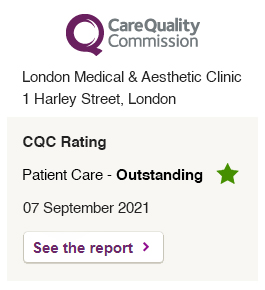The demand for minimally invasive procedures rather than surgical procedures has greatly increased. Because of this there is increased demand for the use of dermal fillers to tackle facial wrinkles and adjust facial features.
Patients also want longer lasting results which have made permanent fillers more popular.
Some practitioners and patients however do not understand the risks and complications associated with these fillers. Practitioners need to be aware of these associated risks, they also need to know how to prevent and treat these complications should they arise. It is also their responsibility to make patients aware of these risks and complications.
All fillers carry risks and their growing popularity in the cosmetic industry have increased the number of complications that are arising from them.
There are some predictable complications of dermal fillers including pain at the injection site, some redness, bruising and swelling. Some of the immediate complications of can include; incorrect placement of the filler, over injection and infection. Most of these issues can be resolved easily if they are caused by temporary fillers. However, complications caused by permanent fillers can be more problematic.

Permanent dermal filler complications
Acute infections – Infections are often caused by uncommon organisms or certain bacteria. On occasion herpes virus may be reactivated in patients. Infections should be treated with antibiotics. Infections caused by permanent fillers remain a risk for all patients with these fillers as there is guarantee that all the material can be removed completely.
Chronic pain – there is an increased number of patients in recent years complaining of chronic pain in certain nerve areas and in the tear trough area. Although the exact reason for this pain is not yet understood the issue may be more difficult to resolve when using permanent rather than temporary fillers.
Early inflammatory nodules – These are red, tender and quite painful. These should also be treated in the same way as infections, with antibiotics. If after four weeks these nodules do not improve corticosteroids should be considered.
Granulomas – granulomas and abscesses can develop from both temporary and permanent dermal fillers.

Removing permanent dermal fillers
When complications arise from the use of permanent dermal fillers surgical removal may the only option to correct it. However in most cases it is not possible to remove all of the particles of the filler.
Permanent fillers are quite difficult to remove and can cause severe and permanent damage to structures. Permanent scarring sometimes occurs after chronic infections. Extensive knowledge of the different regions of the face is required to remove these fillers from the face as it is an extremely difficult procedure.

Dr Ayham Al-Ayoubi from the LMA Clinic: A thorough knowledge of dermal fillers, both temporary and permanent, and an expert knowledge of the anatomical regions of the face is needed to be able to prevent complications from occurring. Surgeons and patients need to be aware that permanent filler can lead to permanent problems.





